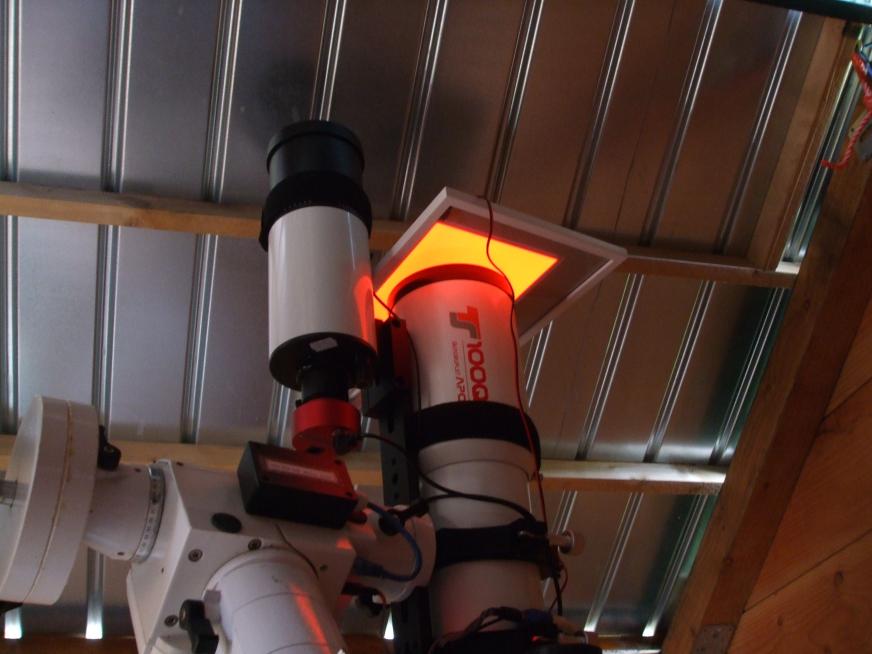EL-panel on top of the 100 mm telescope. Note the telescope front diameter is about 140 mm:

The EL panel was bought for about 15 Euro in Asia. Powered by USB connector at 5 volt. The panel didn't look perfect and three black dust particles could be seen inside. :( Since the telescope is not in focus it isn't a problem.

If powered it lights up with a bluish white color

A simple wooden photo frame was used the protect/house it:

Backside of the frame. Components are simple glued on the back plane using a glue gun:

For a CCD camera without any narrow band filter the EL-panel is too bright so a solution was sought to reduce the brightness. At 5 volt supply is consumes about 0.5 amp. The invertor makes from the 5 volt a high voltage AC mayby 120 volt at a high frequency typically 400 hz. In theorie the EL brightness can be controlled with both the voltage and AC frequency. As a test I connected a regulated power supply an while reducing the voltage the panel kept working down to 2.6 volt supply and consumed a reduced current 70 mA average. This brightness reduction was later implemented by putting a resistor of 100 ohms (emperical value) in series with the 5 volt supply. With the switch the resistor can be bypassed for maximum brightness. With the 100 Ohm resistor in series the brightness reduced with about a factor 40. Exposure times for 25% reading increased from 20 ms to 1 second. With an H-alpha 7nm filter in place at full brightness about 7 seconds exposure are required for 25% reading.

The EL panel in service at maximum brightness:

